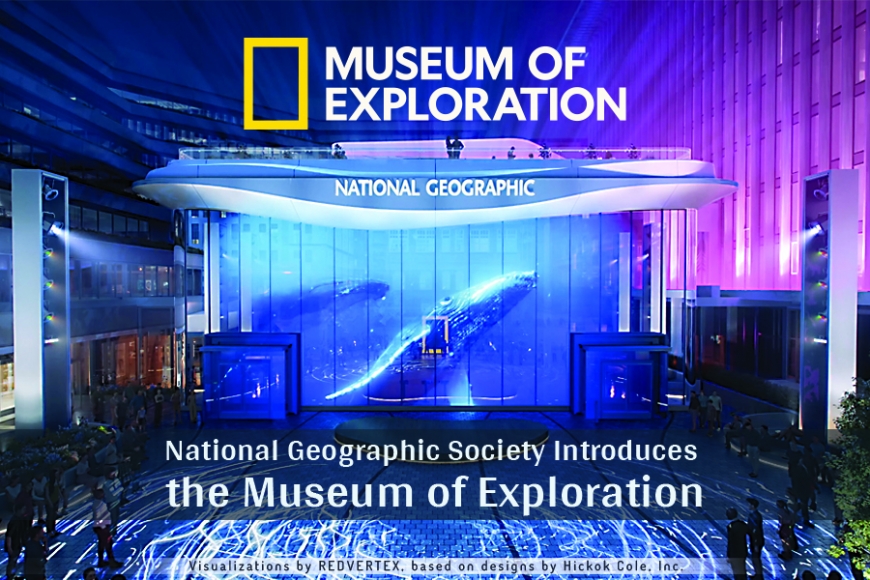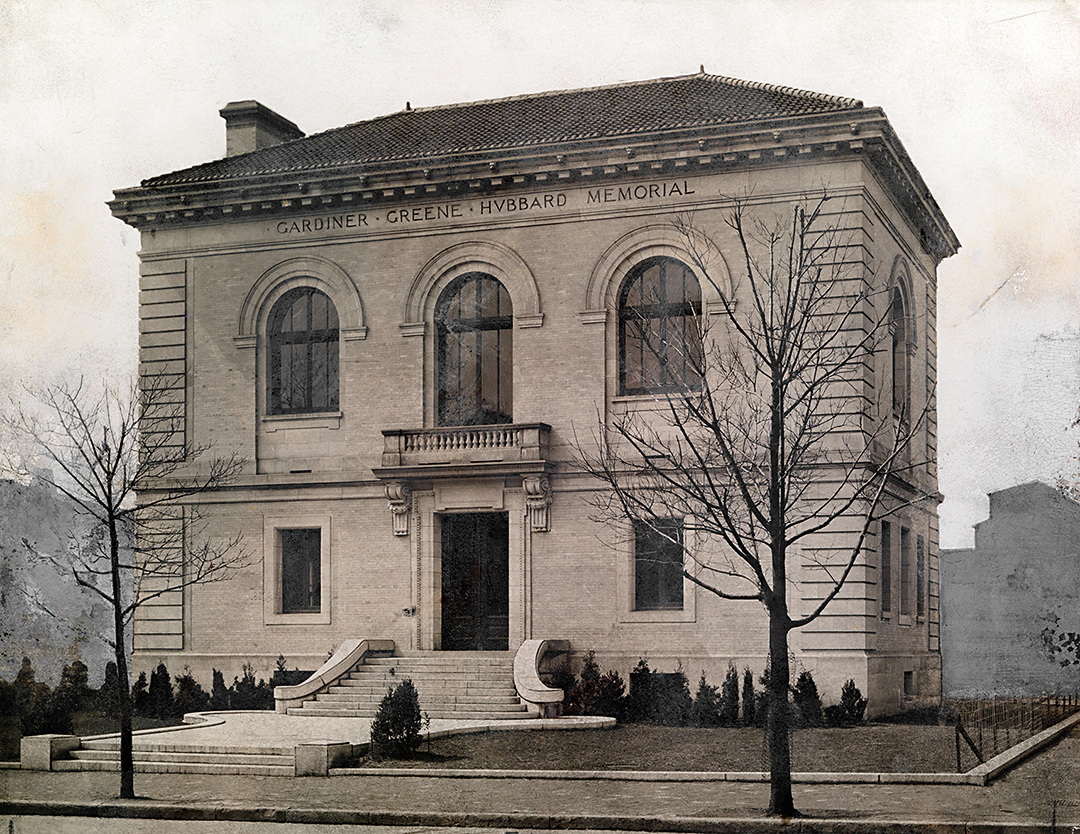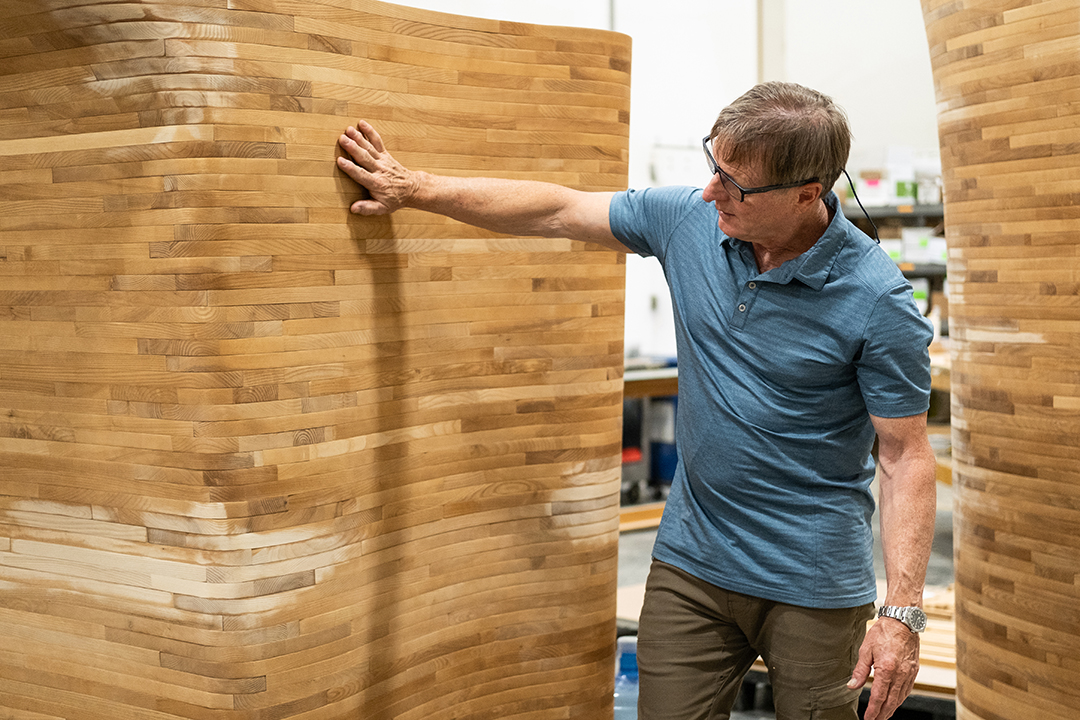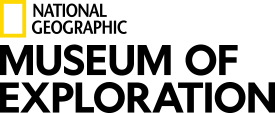The Museum of Exploration will play a vital role in advancing the Society’s mission to illuminate and protect the world’s wonders. As a global nonprofit, the Society sees this new museum as an essential platform for engaging the public in its mission, building upon its long-standing legacy of convening a global community of National Geographic Explorers — scientists, conservationists, storytellers, and educators — who are committed to expanding knowledge and inspiring action.
 Courtyard Daytime Rendering. Image Credit: Visualizations by REDVERTEX, based on designs by Hickok Cole, Inc.
Courtyard Daytime Rendering. Image Credit: Visualizations by REDVERTEX, based on designs by Hickok Cole, Inc.
Courtyard Daytime Rendering. Image Credit: Visualizations by REDVERTEX, based on designs by Hickok Cole, Inc.
Courtyard Daytime Rendering. Image Credit: Visualizations by REDVERTEX, based on designs by Hickok Cole, Inc.
 Courtyard Daytime Rendering. Image Credit: Visualizations by REDVERTEX, based on designs by Hickok Cole, Inc.
Courtyard Daytime Rendering. Image Credit: Visualizations by REDVERTEX, based on designs by Hickok Cole, Inc.
Courtyard Daytime Rendering. Image Credit: Visualizations by REDVERTEX, based on designs by Hickok Cole, Inc.
Courtyard Daytime Rendering. Image Credit: Visualizations by REDVERTEX, based on designs by Hickok Cole, Inc.
 Grosvenor Auditorium Rendering. Image Credit: Visualizations by REDVERTEX, based on designs by Hickok Cole, Inc.
Grosvenor Auditorium Rendering. Image Credit: Visualizations by REDVERTEX, based on designs by Hickok Cole, Inc.
Grosvenor Auditorium Rendering. Image Credit: Visualizations by REDVERTEX, based on designs by Hickok Cole, Inc.
Grosvenor Auditorium Rendering. Image Credit: Visualizations by REDVERTEX, based on designs by Hickok Cole, Inc.
 Learning Launchpad Rendering. Image Credit: Visualizations by REDVERTEX, based on designs by Hickok Cole, Inc.
Learning Launchpad Rendering. Image Credit: Visualizations by REDVERTEX, based on designs by Hickok Cole, Inc.
Learning Launchpad Rendering. Image Credit: Visualizations by REDVERTEX, based on designs by Hickok Cole, Inc.
Learning Launchpad Rendering. Image Credit: Visualizations by REDVERTEX, based on designs by Hickok Cole, Inc.
 Ocean Show Flythrough Rendering. Image Credit: Visualizations by REDVERTEX, based on designs by Hickok Cole, Inc.
Ocean Show Flythrough Rendering. Image Credit: Visualizations by REDVERTEX, based on designs by Hickok Cole, Inc.
Ocean Show Flythrough Rendering. Image Credit: Visualizations by REDVERTEX, based on designs by Hickok Cole, Inc.
Ocean Show Flythrough Rendering. Image Credit: Visualizations by REDVERTEX, based on designs by Hickok Cole, Inc.
 Pavilion Exterior Rendering. Image Credit: Visualizations by REDVERTEX, based on designs by Hickok Cole, Inc.
Pavilion Exterior Rendering. Image Credit: Visualizations by REDVERTEX, based on designs by Hickok Cole, Inc.
View the embedded image gallery online at:
Renderings of the upcoming National Geographic Museum of Exploration. Images Credit:
Pavilion Exterior Rendering. Image Credit: Visualizations by REDVERTEX, based on designs by Hickok Cole, Inc.
Pavilion Exterior Rendering. Image Credit: Visualizations by REDVERTEX, based on designs by Hickok Cole, Inc.
View the embedded image gallery online at:
Renderings of the upcoming National Geographic Museum of Exploration. Images Credit:
https://suleyera.com/culture/culture-news/national-geographic-museum-of-exploration.html#sigProId29b18fe564
Visualizations by REDVERTEX, based on designs by Hickok Cole, Inc.
Affectionately known as the "Home of the Explorer," the Society's historic headquarters occupies a city block in downtown Washington, D.C., and has evolved significantly over the past century. With support from JLL, HITT Contracting, and Hickok Cole, the renovated public attraction will comprise over 100,000 square feet.
"The Museum of Exploration marks a historic chapter in the Society's mission to advance exploration, science, education and storytelling, bringing these experiences to life in ways that spark curiosity, create lasting memories and invite everyone to embrace their inner Explorer," said Jill Tiefenthaler, CEO of the National Geographic Society. "We're excited to welcome visitors to experience our mission through immersive, unforgettable moments that deepen their connection to the wonder of our world."
When visiting the Museum of Exploration, guests will enter through the 11-foot yellow border, discovering wonders of the world that the Society has illuminated for decades:
- Rolex Explorers Landing: An exhibition dedicated to the innovative equipment and stories from awe-inspiring expeditions, featuring the work and artifacts of Explorers.
- Immersive Experience: Visitors will have the chance to step into the role of an Explorer, immersing themselves in thrilling experiences and fieldwork in exciting and remote locations worldwide.
- State-of-the-Art Theater: A 400-seat theater with innovations that will envelop visitors in stunning audiovisuals through National Geographic films and stories.
- Nighttime Courtyard Experience: Washington, D.C.'s first spectacular outdoor nighttime experience that brings the wonder of our world to life through arresting visuals that National Geographic is known for, coupled with projection mapping, interactive media and audioscapes.
And much more, to be announced in the coming months!
"For 136 years the National Geographic Society and its iconic yellow border have served as a global beacon for exploration, curiosity, innovation and wonder," said Jean Case, chairman of the board of trustees of the National Geographic Society. "This new Museum of Exploration will build on that legacy, bringing all who visit the museum exciting opportunities to virtually travel to the front lines of the unknown with our Explorers and help to inspire the next generation of changemakers."
 1904: The National Geographic Society Gardiner Greene Hubbard Memorial Hall in Washington, D.C. Photo by Leet Brothers, National Geographic
1904: The National Geographic Society Gardiner Greene Hubbard Memorial Hall in Washington, D.C. Photo by Leet Brothers, National Geographic
1904: The National Geographic Society Gardiner Greene Hubbard Memorial Hall in Washington, D.C. Photo by Leet Brothers, National Geographic
1904: The National Geographic Society Gardiner Greene Hubbard Memorial Hall in Washington, D.C. Photo by Leet Brothers, National Geographic
 1932: A view of the Sixteenth Street Administration Building of the National Geographic Society. National Geographic Society Headquarters, Washington D.C. Photo by Richard Hewitt Stewart/National Geographic
1932: A view of the Sixteenth Street Administration Building of the National Geographic Society. National Geographic Society Headquarters, Washington D.C. Photo by Richard Hewitt Stewart/National Geographic
1932: A view of the Sixteenth Street Administration Building of the National Geographic Society. National Geographic Society Headquarters, Washington D.C. Photo by Richard Hewitt Stewart/National Geographic
1932: A view of the Sixteenth Street Administration Building of the National Geographic Society. National Geographic Society Headquarters, Washington D.C. Photo by Richard Hewitt Stewart/National Geographic
 1948: Construction of the National Geographic Society Sixteenth Street Building Southwest Wing Extension. Photo by Guy Starling/National Geographic
1948: Construction of the National Geographic Society Sixteenth Street Building Southwest Wing Extension. Photo by Guy Starling/National Geographic
1948: Construction of the National Geographic Society Sixteenth Street Building Southwest Wing Extension. Photo by Guy Starling/National Geographic
1948: Construction of the National Geographic Society Sixteenth Street Building Southwest Wing Extension. Photo by Guy Starling/National Geographic
 1962: View of the National Geographic Society Edward Durell Stone Building (Seventeenth Street Building) while under construction, looking southwest from Rhode Island Avenue. National Geographic Society Headquarters, Washington D.C. Photo by Robert S. Oakes/National Geographic
1962: View of the National Geographic Society Edward Durell Stone Building (Seventeenth Street Building) while under construction, looking southwest from Rhode Island Avenue. National Geographic Society Headquarters, Washington D.C. Photo by Robert S. Oakes/National Geographic
1962: View of the National Geographic Society Edward Durell Stone Building (Seventeenth Street Building) while under construction, looking southwest from Rhode Island Avenue. National Geographic Society Headquarters, Washington D.C. Photo by Robert S. Oakes/National Geographic
1962: View of the National Geographic Society Edward Durell Stone Building (Seventeenth Street Building) while under construction, looking southwest from Rhode Island Avenue. National Geographic Society Headquarters, Washington D.C. Photo by Robert S. Oakes/National Geographic
 1984: An evening view of the National Geographic Society's M Street building. National Geographic Society Headquarters, Washington D.C. Photo by Claude E. Petrone/National Geographic
1984: An evening view of the National Geographic Society's M Street building. National Geographic Society Headquarters, Washington D.C. Photo by Claude E. Petrone/National Geographic
1984: An evening view of the National Geographic Society's M Street building. National Geographic Society Headquarters, Washington D.C. Photo by Claude E. Petrone/National Geographic
1984: An evening view of the National Geographic Society's M Street building. National Geographic Society Headquarters, Washington D.C. Photo by Claude E. Petrone/National Geographic
 1984: An aerial view of National Geographic Society Headquarters, Washington D.C. Photo by Steve Raymer/National Geographic
1984: An aerial view of National Geographic Society Headquarters, Washington D.C. Photo by Steve Raymer/National Geographic
View the embedded image gallery online at:
Historic milestones of National Geographic Society throughout the decades. Photos courtesy of National Geographic.
1984: An aerial view of National Geographic Society Headquarters, Washington D.C. Photo by Steve Raymer/National Geographic
1984: An aerial view of National Geographic Society Headquarters, Washington D.C. Photo by Steve Raymer/National Geographic
View the embedded image gallery online at:
Historic milestones of National Geographic Society throughout the decades. Photos courtesy of National Geographic.
https://suleyera.com/culture/culture-news/national-geographic-museum-of-exploration.html#sigProIdb30e462150
Education meets exploration at the Museum of Exploration, where learning experiences ignite curiosity and wonder in the Explorers of tomorrow. When school groups visit, they'll cultivate their Explorer Mindset, the same attitudes and skills that drive Explorers to inquire, build knowledge, and think critically and creatively to solve the world's most pressing problems.
Inclusivity and accessibility have been instrumental in the museum's design and visitor experience. Braille instructional text, tactile and sensory maps, intuitive app support with visual descriptions, American Sign Language (ASL) interpretations of media, refrigerators available for guest medication storage, all-gender restrooms, and wellness rooms that can be used for nursing and low-sensory time are some of the offerings available. All exhibition spaces will feature English and Spanish text, and the experience-based spaces will have Spanish subtitles. Resources will also be available in multiple additional languages.
"This experience is set to become a staple of the Washington, D.C. community — particularly within the Golden Triangle neighborhood — and it's important we build upon our legacy as a historic institution in this city," said Emily Dunham, chief campus and experiences officer at the National Geographic Society. "We are committed to making a positive impact at every level, inspiring the Explorer in all visitors and uniting the public on a common mission to become global stewards of our extraordinary planet."
-
 The wood millwork for the Pavilion at the Museum of Exploration. Photo credit: Cassidy Motahari / National Geographic
The wood millwork for the Pavilion at the Museum of Exploration. Photo credit: Cassidy Motahari / National Geographic
The wood millwork for the Pavilion at the Museum of Exploration. Photo credit: Cassidy Motahari / National Geographic
The wood millwork for the Pavilion at the Museum of Exploration. Photo credit: Cassidy Motahari / National Geographic
-
 The wood millwork for the Pavilion at the Museum of Exploration. Photo credit: Cassidy Motahari / National Geographic
The wood millwork for the Pavilion at the Museum of Exploration. Photo credit: Cassidy Motahari / National Geographic
The wood millwork for the Pavilion at the Museum of Exploration. Photo credit: Cassidy Motahari / National Geographic
The wood millwork for the Pavilion at the Museum of Exploration. Photo credit: Cassidy Motahari / National Geographic
-
 The wood millwork for the Pavilion at the Museum of Exploration. Photo credit: Cassidy Motahari / National Geographic
The wood millwork for the Pavilion at the Museum of Exploration. Photo credit: Cassidy Motahari / National Geographic
The wood millwork for the Pavilion at the Museum of Exploration. Photo credit: Cassidy Motahari / National Geographic
The wood millwork for the Pavilion at the Museum of Exploration. Photo credit: Cassidy Motahari / National Geographic
-
 An emerald ash borer larva creates galleries that prevent nutrient flow, ultimately killing the ash tree. Photo by John Cullum, National Geographic.
An emerald ash borer larva creates galleries that prevent nutrient flow, ultimately killing the ash tree. Photo by John Cullum, National Geographic.
An emerald ash borer larva creates galleries that prevent nutrient flow, ultimately killing the ash tree. Photo by John Cullum, National Geographic.
An emerald ash borer larva creates galleries that prevent nutrient flow, ultimately killing the ash tree. Photo by John Cullum, National Geographic.
-
 The emerald ash borer, an invasive beetle that is decimating North American ash forests. Video still by Jesse Goldberg, National Geographic.
The emerald ash borer, an invasive beetle that is decimating North American ash forests. Video still by Jesse Goldberg, National Geographic.
The emerald ash borer, an invasive beetle that is decimating North American ash forests. Video still by Jesse Goldberg, National Geographic.
The emerald ash borer, an invasive beetle that is decimating North American ash forests. Video still by Jesse Goldberg, National Geographic.
-
 The emerald ash borer, an invasive beetle that is decimating North American ash forests. Video still by Jesse Goldberg, National Geographic.
The emerald ash borer, an invasive beetle that is decimating North American ash forests. Video still by Jesse Goldberg, National Geographic.
The emerald ash borer, an invasive beetle that is decimating North American ash forests. Video still by Jesse Goldberg, National Geographic.
The emerald ash borer, an invasive beetle that is decimating North American ash forests. Video still by Jesse Goldberg, National Geographic.
View the embedded image gallery online at:
https://suleyera.com/culture/culture-news/national-geographic-museum-of-exploration.html#sigProId6984fbf3ed
The wood millwork for the Pavilion at the Museum of Exploration was sourced from a family farm in New England where the emerald ash borer, an invasive beetle from Asia, is steadily decimating ash forests. In order to get ahead of the spread of the beetle, the farm had to fell all of their trees. The National Geographic Society decided to build the millwork from these ash trees instead of another species that would have otherwise come down for no other purpose. Photo credits: Cassidy Motahari / National Geographic. | An emerald ash borer larva creates galleries that prevent nutrient flow, ultimately killing the ash tree. Photo by John Cullum, National Geographic | The emerald ash borer, an invasive beetle that is decimating North American ash forests. Video still by Jesse Goldberg, National Geographic
https://suleyera.com/culture/culture-news/national-geographic-museum-of-exploration.html#sigProId6984fbf3ed
The Museum of Exploration will open its doors in 2026 to inspire current and future generations in the Washington, D.C. region and worldwide to learn about, care for and protect the planet. Visitors will leave knowing what it means to be an Explorer and that exploration is for everyone. They will be inspired to become explorers by engaging in, observing and documenting the world around us.
This ambitious project underscores National Geographic’s dedication to conservation and the power of storytelling, encouraging visitors to connect with and contribute to the protection of our shared planet.
Learn more at natgeomuseum.org
The National Geographic Society is a global nonprofit organization that uses the power of science, exploration, education and storytelling to illuminate and protect the wonder of our world.
Since 1888, National Geographic has pushed the boundaries of exploration, investing in bold people and transformative ideas, providing more than 15,000 grants for work across all seven continents, reaching 3 million students each year through education offerings and engaging audiences around the globe through signature experiences, stories and content.
To learn more, visit nationalgeographic.org or follow us on Instagram, LinkedIn and Facebook.
Follow National Geographic Society
SOURCE National Geographic Society







